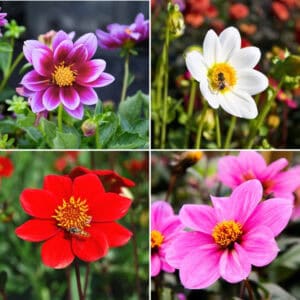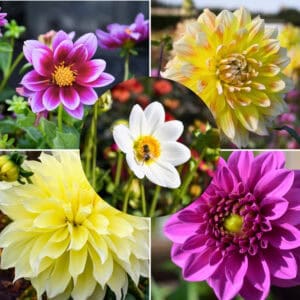What is the difference between a flower bulb, a tuber and a rhizome? Although they are all capable of brightening up our border or garden with the most beautiful flowers, they differ considerably from each other. This is not only in their appearance, but also in the flowering method and the planting time. What are the most striking differences between bulbs, tubers and sticks?
Inhoudsopgave
Explained: this is how flower bulbs, tubers and rhizomes differ from each other
Rhizomes
A rhizome is elongated. The stick grows horizontally under the ground. The end then comes up to grow into a new plant. They are also called rhizomes. Plants that produce rhizomes include the peony and ginger.
- Peony
- Ginger lily
- Bearded iris
Rhubarb is also a rhizome. Rhizomes are therefore planted horizontally instead of vertically. They find a planting depth of approximately 10 centimetres the most ideal. Well-known rhizomes in the garden are, for example, the ginger lily and the Japanese iris.
Flower bulbs
A flower bulb is round and has the shape of an onion. The part that blooms in spring or summer, depending on the type of flower bulb, is the bud of the flower bulb. This is protected by underlying layers. These are also called scales.
- Crocus
- Narcis
- Hyacinth
- Tulip
- Grape
Flower bulbs carry their own nutrients. Summer flower bulbs can be planted in the ground in the spring when the frost period is over. Such as the begonia and the anemone. Spring flower bulbs are planted between September and December, just before the frost. You plant flower bulbs at a depth that is approximately 3 times the size of the bulb, but at least 8 centimetres deep. In this way, the flower bulbs are reasonably protected against frost.
Tubers
There is a difference between flower bulbs and rhizomes, but also between bulbs and tubers. A tuber does not have scales like a flower bulb does. A tuber stores the nutrients in its stem or roots. There are buds on these that then come into bloom. Popular tubers that you encounter in the garden or border are the buttercup and dahlia .
- Dahlia
- Cyclamen
- Ranunculus
- adiool
A dahlia is also a tuber that blooms from the end of summer to the beginning of winter. You can plant these tubers when the last night frost has left the air. Place them in a nice spot in the sun and you can enjoy a colorful (late) summer for an extra long time.
Conclusion
While bulbs, tubers, and rhizomes are all capable of providing your garden with beautiful blooms, they each have their own unique characteristics and needs. Flower bulbs, such as tulips and crocuses, are round structures that carry their own nutrients and are usually planted in the fall. Tubers, such as dahlias and ranunculus, store their nutrients in their stems or roots and usually bloom in the summer after being planted in the spring.
Rhizomes, such as peonies and ginger, grow horizontally underground and produce new plants from the end of the rhizome. By understanding how each of these plants works and when they are best to plant, you can make the most of your garden and enjoy a diverse and blooming environment all year round.












